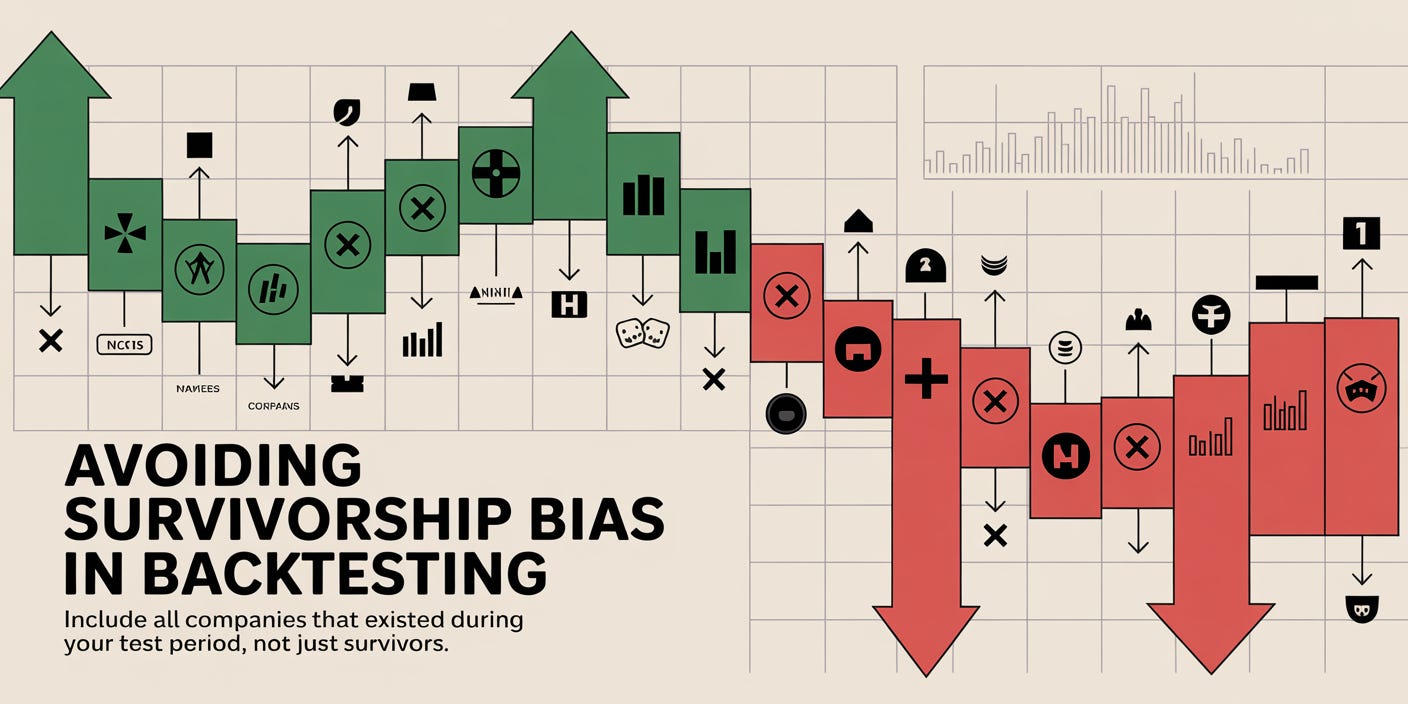Avoiding Survivorship Bias When Backtesting
Survivorship Bias Explained
Backtesting is the backbone of quantitative research. It tells us how a strategy would have performed historically before we use real money on the strategy.
But there’s a built-in flaw: you’re often only testing against stocks that survived.
Let’s say you build a backtest showing that stocks tend to outperform once their realized volatility compresses below their 6-month average. You test it across every stock currently listed on the NYSE or Nasdaq, and the results look fantastic.
But the problem is every ticker in your dataset already survived the journey. It excludes the hundreds (or thousands) of companies that once traded with realized volatility compresses below their 6-month average but eventually went bankrupt or delisted. The losers are gone from your sample. You’re only testing on the stocks that didn’t die.
That’s survivorship bias.
Like Testing an Airbag on Survivors
Survivorship bias inflates historical returns and success rates. Your strategy appears great not because it truly works, but because you’ve removed the evidence of when it didn’t.
It’s like testing an airbag by surveying only drivers who survived the crash.
The Volatility View
Unlike equities, volatility itself can’t go bankrupt or delist, it’s a derivative of overall market behavior, not a company. The VIX doesn’t file for Chapter 11; VIX doesn’t vanish because earnings missed expectations. That gives volatility strategies a unique advantage.


